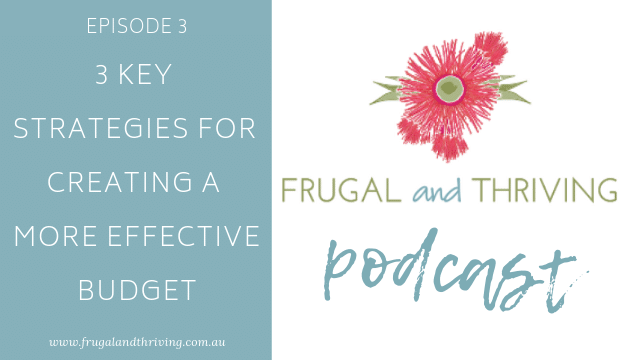Is Your Budget a Success? How to Track Your Financial Progress
This website may earn commissions from purchases made through links in this post.
Progress is motivating! But only if you can SEE it. This article shows you how to track your financial progress and evaluate the success of your budget.

“There’s one undeniable motivational force unlike any other: progress – even the perception of it.” Tommy Baker -The 1% Rule
Before working towards financial goals, we need a starting point. A yardstick to measure progress against.
Sometimes it can feel like we’re making NO progress towards our goals. But when I track our progress with pen and paper (or spreadsheet), it can be surprising just how far we’ve come over the years.
In a world of instant gratification, we don’t often appreciate progress.
What metrics do we track to look at our progress?
In this article, I share the key metrics we track to measure our financial progress.
If you’re following along, your starting point may be zero, and that’s okay; write it down anyway. The aim is to make progress. And tracking your progress is a great motivator.
I’ve been doing our budget and tracking our financial progress since 2005. It’s motivating putting all of these balances into a spreadsheet and charting them. ALL of our big financial changes are on that chart: moving interstate, buying a house, losing a job, and having kids. It’s all there in the lumps and bumps of a line graph.
When we track our financial progress, we’re not just guessing our progress. We can actually see results (and areas that need improving).
Disclaimer: This is general information only. In this blog, I share my savings and budget planning and what works for us. You should always consult a qualified financial expert when making money decisions (not a random stranger on the internet like me – or even your mate at the pub).
How to Track Your Financial Progress
The steps to tracking your financial progress that I use are straightforward:
- Write down your beginning balances. That means to write down the balance of your savings accounts and debts as of TODAY.
- Write down the balance of the same accounts in six months’ time or twelve months’ time and compare the difference.
- Ask some pertinent questions. Has there been a change over time? Is the change positive or negative? WHY? For good reasons or not-so-good reasons?
Here are some of the financial balances you might consider tracking.
1. Track Your Savings
What is the current balance of your savings account(s)? Do you have an emergency fund? What is the current balance of your emergency fund?
I have one savings account but break it up on a spreadsheet for things like bills, holidays, Christmas savings, home repairs etc. This way I can see the overall progress of our savings as well as track progress for our individual goals. I can also see WHY there have been changes in our savings balance.
For example, if our savings are significantly lower than the previous year, I can look at each savings category to see why. I can identify that our savings are down because we installed a hot water heater or went on a holiday, for instance.
2. Track Your Investments
Do you own investments? Maybe it’s shares or property, term deposits or even your superannuation (retirement fund).
Write down the current balance at the beginning of the year, then again at the end of the year. This may be a bit difficult with property value, but estimate the current market value and drop it a little bit to track your progress.
2. Track Your Debts
What is the current balance on your credit card(s)? Do you have personal loans or a car loan? What about interest-free loans, store cards, student loans, HELP, or a mortgage? Write down the current balances for all debts and then total it up.
Ideally, this is an amount you want to DECREASE over the years as you pay off your debts.
3. Calculate Your Net Worth
Your net worth is a way of calculating your overall “wealth”. It reveals how good you are at saving and investing and using debt wisely. For more information, see the calculating net worth article.
4. Calculate Your Liquidity
Liquidity is a good ratio to measure and improve. It’s basically how many times your assets can cover your debts. If all of your short-term loans were called in tomorrow, would you be able to cover them? Would you have anything left over?
The current ratio and liquid ratio are two simple formulas that allow you to asses whether your debt levels are healthy and manageable or whether you’re drowning and in trouble (although your gut probably already knows this).
You can also use these ratios to track your progress in debt reduction.
How to Calculate Your Current Ratio
The Current Ratio is calculated by dividing the total value of your assets by the total value of your liabilities according to your statement of net worth. This is then written as a ratio of 1.
So if the value of your assets is equal to the value of your debts, your ratio would be 1:1.
That means if you have $1000 worth of assets, including your savings accounts, and you have $1000 in debt, your ratio is 1:1.
If your creditors demanded that you had to pay all of your debts today, then you would be able to cover them but would have nothing left.
If your ratio is 2:1, then you can cover your debts 2 times over. So if the value of your assets is $1,000 and your debts are $500, then you would be able to pay all your debts today and still have $500 leftover.
If the ratio is less than 1 – like 0.5:1 – then you don’t have enough value in your assets to cover your debts. So if the value of your debts was $1,000, then the value of your assets would be $500, and you would be $500 short if you had to pay your debts today.
To recap: to calculate your current ratio, divide your total debts by your total assets.
If you look at the example statement of net worth, the total value of assets is $243,500, and the total value of liabilities is $80,050. This makes the current ratio 3.04:1 – debts can be covered three times over by the value of the assets.
How to Calculate Your Liquid Ratio
The liquid ratio is similar, but it only looks at liquid assets and short-term loans.
Liquid assets are those that are cash or can be readily turned into cash: savings, shares, managed funds, bonds.
Short-term loans usually include credit card balances, personal loans, etc. – debts where there is no distinct asset attached to them like a mortgage.
The liquid ratio measures whether you can pay short-term loans in whole when they fall due. It is considered a better measure of financial health. Improving your liquid ratio provides a buffer against bad times.
The liquid ratio is calculated in the same way as the current ratio and is shown as a ratio of 1. So if your liquid ratio is 3:1, then you have enough ready cash to cover your short-term debts 3 times over.
There are THREE WAYS TO IMPROVE YOUR LIQUIDITY:
- increase your savings
- reduce your debt; or
- do both at the same time.
Watching the change in your current and liquid ratios is another motivator when you’re trying to get out of debt. Use it as a tool to improve your overall financial health and security.
5. Track Your Current Spending Patterns
How much do you currently spend on…fill in the blank?
If your goal is to reduce your spending and increase your savings, then you need to know what you’re spending your money on now to analyse areas in which you can cut back.
6. Track Your Current Income Patterns
How much do you currently earn? Maybe your goal this year is to get a raise or a promotion. Write down your starting point as a point of comparison for the end of the year.
7. Track Metrics Related to Your Goals
Do you want to reduce grocery spending this year? What are you currently spending and on what? What’s your goal spending amount? Track your progress.
Want to save for a holiday? What’s your goal amount? How much do you need to save Each Week? How much do you already have saved? Track your progress.
Want to pay off your credit card? What is the balance you need to pay off? How much is this a month?. How much have you paid off by the end of the year? Track your progress.
Write down the starting point for anything else that relates to financial goals for the year.
Evaluating the Success of Your Budget
To recap: Write down your balances for each of the above EACH YEAR and evaluate the TREND from year to year (or in the short term, month to month for more immediate motivation).
Are your savings increasing?
Are your debts decreasing?
Is your liquidity improving?
I like to chart my progress in a spreadsheet because it’s easy to visualise trends by looking at a chart.
By looking at these trends, you can see if your budget is supporting your long-term goals or not. If you’re NOT progressing towards your long-term goals, then it’s a good indicator that you need to go over your budget.
Progress is the most motivating thing you can do, so track your financial progress and celebrate your wins.





